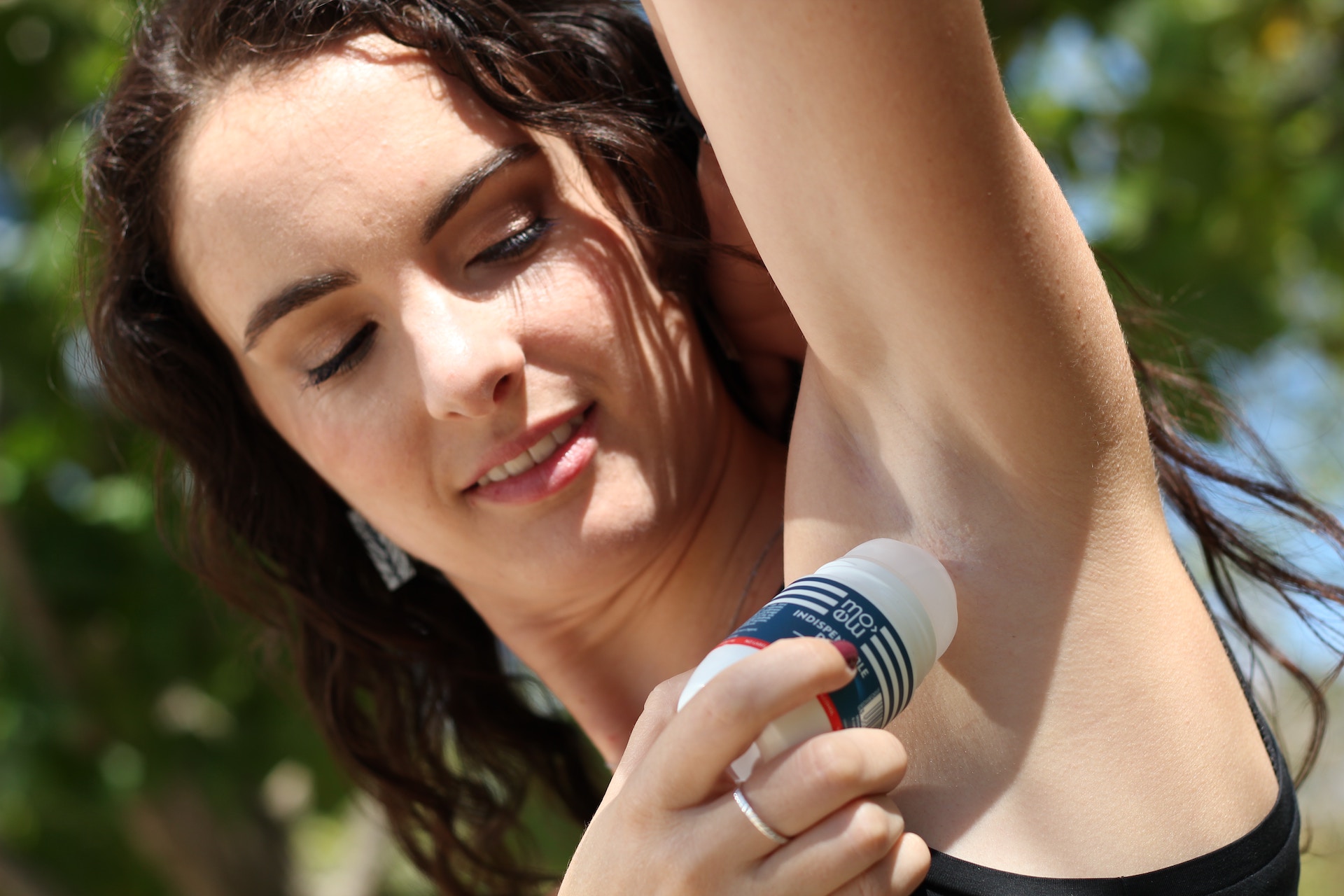Contrary to what filters and Photoshop would have you believe, not everyone has evenly-toned armpits. Darkness under the armpits is completely normal and common for “reasons ranging from genetics to fluctuating hormones to postinflammatory hyperpigmentation due to waxing, ingrown hairs, and allergic reactions to cleansers or body products,” says Robyn Gmyrek, MD, a board-certified dermatologist in New York City.
Sometimes, simple sweating is to blame. “Excessive sweating causes the armpit to become sensitive to its own sweat. We call this irritant contact dermatitis,” says Kseniya Kobets, MD, a board-certified dermatologist and director of cosmetic dermatology at Montefiore Einstein Advanced Care.
Whether to treat dark spots under the armpits or leave them alone is a personal choice. Just like hyperpigmentation on the rest of the body, it’s generally not harmful. It’s even possible for hyperpigmentation to resolve on its own if it’s recent and not as severe,” says Dr. Kobets. It might be better to wait because the skin under the armpits is more sensitive and thinner than the rest of the body – and therefore more permeable to topical products,” Dr. Gmyrek says. Dr. Gmyrek.
Suppose you want to speed up the process of whitening your underarms. In that case, it’s important to work with your dermatologist to treat the underlying cause and “rule out medical conditions such as pregnancy, eczema, psoriasis or diabetes,” Dr. Gmyrek says. In the meantime, consider how your daily routine might secretly affect underarm hyperpigmentation.
Consider how you shave
If you opt for a hairless look under the armpits, “physical rubbing and friction cause the skin to react with irritation and redness, which can develop into brown discoloration over time,” says Dr. Kobets.
Don’t risk dry shaving or using only water, which can cause friction. “Remember to use shaving cream so the razor glides smoothly without damaging the skin,” she says. Laser treatment or in-office waxing can help extend the time between hair removal sessions.
Introduce exfoliation
There’s good and bad news regarding exfoliating your underarms: “Peels can be useful, but they’re best for superficial hyperpigmentation – and don’t completely remove deep-rooted hyperpigmentation,” Dr. Gmyrek says.
If hyperpigmentation is superficial, a chemical peel is the best choice. “A big reason for skin darkening is physical friction and inflammation, which leads to irritation and darkening,” says Dr. Kobets.
Can you use the peel you use on your face on your underarms? “Maybe, if the scrub is very gentle. Look for scrubs suitable for sensitive skin and reduce the frequency of use to once a week to see how your armpits respond,” Dr. Gmyrek says. However, a patch test is important since there are no regulations on which products are appropriate for sensitive skin. As with any new product, you should use a small test patch for at least three to five days to see if irritation occurs. If you get an allergic reaction, you’ll likely get more postinflammatory hyperpigmentation,” Dr. Gmyrek says.
To play it safe, try a product designed and tested specifically for your underarm area, like Megababe Happy Pits Detoxifying Underarm Mask, which contains glycolic acid. If you want faster results, “you can have light chemical peels done at your dermatologist’s office. However, depending on the severity of the darkening, it takes several months to see improvement, and treatment must be combined with prescription medications,” says Dr. Kobets.
Here’s a quick guide to help you figure out which acid peel is best for you:
Glycolic acid
“Glycolic acid is an alpha hydroxy acid (AHA) that helps exfoliate the skin by sloughing off dead skin cells and promoting cell turnover. It can be effective for hyperpigmentation but may be too harsh for some people with sensitive skin,” Dr. Gmyrek says.
Salicylic Acid
“Salicylic acid is a beta hydroxy acid (BHA) that can penetrate the pores and help exfoliate the dead cells on the skin’s surface, which can help eliminate superficial hyperpigmentation,” she says.
Lactic acid
“Lactic acid, another AHA, can help gently exfoliate skin and improve skin texture. It’s generally milder than glycolic acid, making it a good option for the underarm area, which is prone to sensitivity,” she says.
Try topicals – with caution
Because the skin in the armpits folds in on itself, “this leads to increased moisture and warmth in the area, which can also improve absorption of topical medications,” Dr. Gmyrek says. So it’s important to be mindful of your products and ingredients in this area. Patience is the game’s name here: start slowly and use only a small amount. “When applying products to the area, make sure the previous deodorant is completely removed, the soap is completely washed off and the area is completely dry,” adds Dr. Kobets.
“Overall, the enzyme tyrosinase is the main target in treatments that regulate skin tone and hyperpigmentation. This enzyme is crucial for melanin or pigment formation, so blocking tyrosinase prevents melanin formation and reduces hyperpigmentation. I love azelaic acid because it’s gentle and well-tolerated by most skin types. It’s available up to 15% over the counter and up to 20% prescription. Other ingredients that block tyrosinase include kojic acid, resveratrol, and tranexamic acid,” says Dr. Gmyrek.
You can also focus on ingredients known for their brightening properties: “Retinol and vitamin C, while great brighteners, can also cause irritation and need to be introduced slowly, especially since the skin in wrinkles is more sensitive,” says Dr. Kobets. “Niacinamide reduces the transfer of pigment to skin cells, helps strengthen the skin barrier, and has an anti-inflammatory effect,” says Dr. Gmyrek.
Experiment with deodorant
Deodorants and antiperspirants can be complicated if you struggle with dark underarm skin. For many people, deodorant fragrances can irritate, leading to hyperpigmentation. Be wary of deodorants labeled as ‘natural’ – both fragrances derived from essential oils and lab-created fragrances can cause negative reactions on your skin,” says Dr. Gmyrek. Sometimes aluminum can also be the cause of underarm hyperpigmentation. “Native Unscented Regular Deodorant contains sodium bicarbonate, also known as baking soda, and can be less irritating than aluminum,” says Dr. Kobets.
The downside is that while small amounts of aluminum are good for eliminating odor, they’re not as helpful in fighting sweat – also a big culprit for irritation. The Dove Beauty Even Tone Rejuvenating Blossom 48-Hour Antiperspirant and Deodorant Stick contains brightening niacinamide, which fights uneven skin tone while preventing sweat and odor and contains fragrance.
The story’s moral is that a little trial and error with deodorants may be necessary. Remember to use deodorant for at least two to four weeks before switching to a new one, as your underarms get used to the different ingredients.
Remember your SPF
It’s good to be diligent about applying your SPF, but many of us forget it on less obvious areas of the body. Because underarm skin is so sensitive and more susceptible to sun damage when exposed to UV rays, it’s important to protect your underarms with sunscreen when outdoors.







